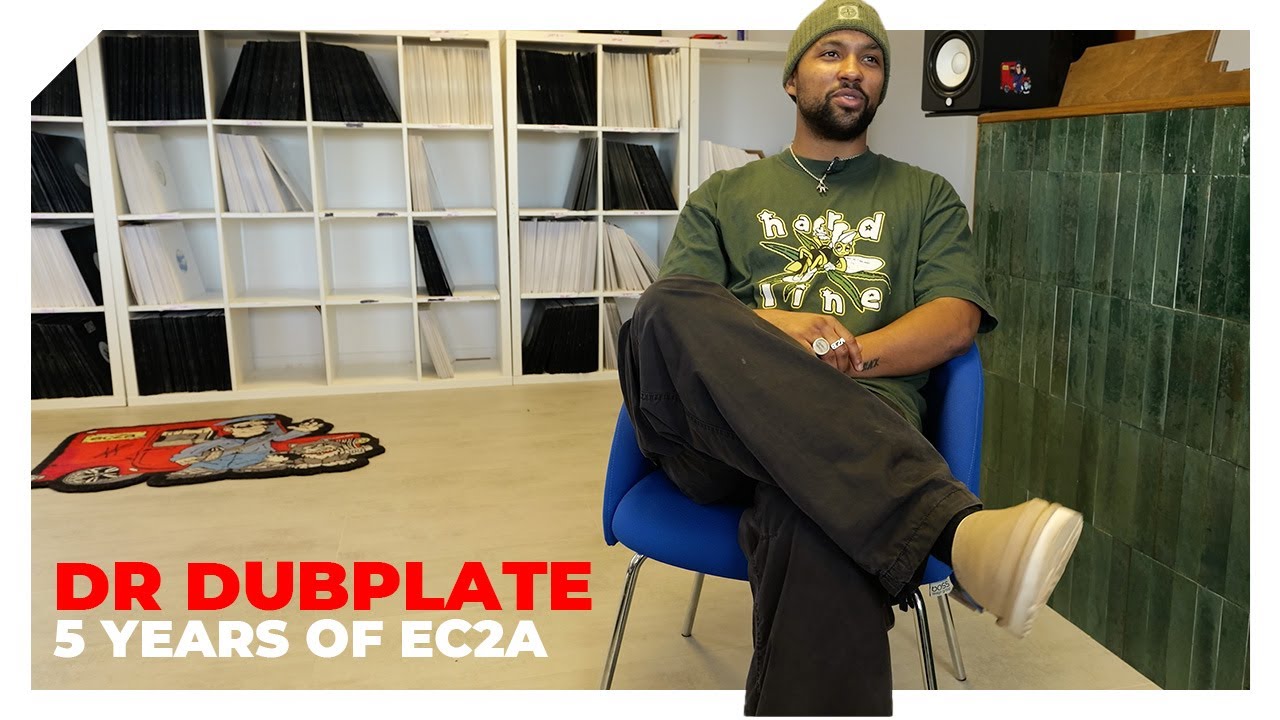Is pop music really being dumbed down? A music professor explains what the science really says
Scientific studies claim that modern music is growing simpler than ever before - both lyrically and musically. But are they measuring what really matters?

The history of attempts to explain music with math and science goes back to antiquity. In the past few years, though, it has become possible to perform automated analysis of large data sets, giving rise to the new scientific subfield of music information retrieval (MIR).
You can learn a lot of fascinating things about music this way. However, as more aspects of music become susceptible to mathematical analysis at scale, we need to think deeply about what questions this kind of enquiry can and can’t answer. Scientific study of music is great, but it can turn into scientism. Two recent papers show the promise and the pitfalls involved.
Are song lyrics being dumbed down?
Let’s begin with this: “Song lyrics have become simpler and more repetitive over the last five decades” by Emilia Parada‐Cabaleiro, Maximilian Mayerl, Stefan Brandl, Marcin Skowron, Markus Schedl, Elisabeth Lex and Eva Zangerle, published in the open-access journal Scientific Reports.
The paper finds that popular music lyrics have become simpler and easier to comprehend over the past five decades. That seems bad, right? A sign that our civilization is in decline? Before we accept that conclusion, let’s ask: how do the authors define “popular music”, and how do they define “simpler”?
Defining “popular music” is the easy part. The study uses the lyrics to 353,320 English-language songs sourced from Genius.com, released in the years 1970 to 2020 and belonging to the most popular genres according to Last.fm: rap, country, pop, R&B, and rock. The authors acknowledge that their chosen corpus has some problems. Last.fm’s user base is a specific subset of Western music listeners: predominantly men between 20 and 30 years old from the United States, Russia, Germany, and the UK.
The authors recognize that this group’s music taste “does not generalize to the population at large. The findings of our analyses… are therefore valid only for this particular subset of music listeners.” So the study does not address “popular music” so much as “music that is popular with twentysomething men in a few countries.” That is still a worthwhile study, but we need to keep the scope in mind.
The authors find that song lyrics within their sample have become less complex, more repetitive and less challenging over the past fifty years
How about the “simpler” part? The authors explain that they look at “vocabulary richness, readability, complexity, and the number of repeated lines.” Some of these measurements are straightforward: are the words in the song commonly used or rare? How much do they repeat within the song? Other measurements are more problematic.
Get the MusicRadar Newsletter
Want all the hottest music and gear news, reviews, deals, features and more, direct to your inbox? Sign up here.
The authors define “difficult” words as those having three or more syllables. I can think of a couple of curse words of three or more syllables off the top of my head that no one would consider to be very sophisticated, but let’s put a pin in that. The authors also point out that the readability measures they are using were developed for prose, and that songs don’t necessarily use complete sentences. So we should take that one with a grain of salt.
According to their measurements, the authors find that song lyrics within their sample have become less complex, more repetitive and less challenging over the past fifty years. They find the most significant simplification trend in rap, and lesser but still noticeable simplification in pop, rock, and R&B.
My fellow Gen X hip-hop fans will be nodding their heads in agreement here; we like to complain about how the lyrical virtuosity of our boom-bap heroes has given way to chanted drug references and luxury brand names. MCs like Kendrick Lamar or Doechii seem like throwbacks. But I have heard younger rap fans pushing back on this, pointing to the way that trap uses the voice as more of a sound or texture and less for linear narrative.
Some of the music I love most in the world is extremely repetitive, from James Brown to Fela Kuti
Lyrical repetitiveness seems like a guaranteed sign that a song is unsophisticated. This is part of a larger assumption that more repetitive music must be worse. I resist this assumption, because some of the music I love most in the world is extremely repetitive, from James Brown to Fela Kuti. Kraftwerk use minimal lyrics repeated endlessly to create a trance-like effect. A repeated singalong chorus is one of the deepest musical pleasures that exists. The Beatles’ “Hey Jude” repeats “Na na na nanana na, nanana na, hey Jude” for three entire minutes, and I wouldn’t mind hearing it for another three, or another thirty for that matter.
While I am skeptical of the idea that song lyrics are getting dumber over time, I do think the study points to a trend that is worth paying attention to: pop song lyrics are becoming angrier. Rap has shown the highest increase in anger, followed by R&B, while country shows the least increase. Strangely, rap also shows a moderate increase in positive emotions, but these have declined in pop, rock, country, and R&B.
Does this mean that young American men as a group are getting angrier? Recent political developments would seem to suggest that they are. Music is an excellent gauge of a culture or subculture’s collective emotional state. If this trend continues, we should be worried.
Is pop music getting simpler?
Another recent paper makes a broader claim about how music is getting simpler: “Decoding Musical Evolution Through Network Science” by Niccolò Di Marco, Edoardo Loru, Alessandro Galeazzi, Matteo Cinelli and Walter Quattrociocchi. This paper has been getting lots of social media attention and some mainstream press, because it seems to confirm a widely held belief about how our civilization is declining.
Before we even get into the paper’s contents, you need some context. The paper was posted as a preprint to arXiv, and it has not been through the academic peer review process. Peer reviewers subject a paper to much heavier scrutiny than the moderators of arXiv do. If I were a reviewer of this paper, there are definitely some points that I would ask the authors to clarify or walk back.
The authors recognize that proving this claim is difficult “due to the lack of a precise method for measuring musical complexity”. That is putting it mildly!
Di Marco et al apply network analysis - the study of relationships and interactions within a system to uncover significant patterns and structures - to a large corpus of melodies, and they find that the melodies are getting less complex. They have an explanation for why this is happening: the simplifying effects of “content circulating in fast, interconnected, and algorithmically curated environments.” The authors recognize that proving this claim is difficult “due to the lack of a precise method for measuring musical complexity”. That is putting it mildly! So, how do they measure complexity?
The authors tell us that they have analyzed “a dataset of approximately 20,000 MIDI files.” Let’s stop right there. MIDI files are not music. They are sheet music for digital instruments, lists of instructions telling the instument to play particular notes at particular times with a particular velocity. Like sheet music, MIDI encodes pitches, rhythms, dynamics and tempo. Also like sheet music, MIDI does not encode sound, except in the most indirect and abstract way.
The limitations of MIDI are a bigger problem for some styles of music than others. If you have a MIDI file for JS Bach’s Passacaglia and Fugue in C minor, you can use a synthesized organ to get a pretty good idea of how the piece will sound when played “for real.”
A MIDI file of All Along The Watchtower by Bob Dylan, however, gives you an experience of the song that's far less complete. The MIDI might tell you the chords that Bob is playing and the notes he’s (ostensibly) singing, but it won’t give you any idea of what his voice is like.
Di Marco et al did not measure complexity in “music”, they measured it in MIDI files
You will have an even harder time reconstructing Jimi Hendrix’s recording of All Along The Watchtower from a MIDI file. Most people think that All Along The Watchtower is “by” Jimi Hendrix, and they are not wrong. Jimi didn’t write the notes-on-the-page aspect of the song, but he did create the recording that lives in our collective cultural understanding, and all subsequent versions of the song refer back to his. MIDI can tell you what notes Jimi played, sort of, but it won’t give you the sound of the recording.
The difference between music as representable by notation/MIDI and music as it exists in sound recordings is most significant for more recent pop styles like electronic dance music and hip-hop. Say you wanted to notate “Alright” by Kendrick Lamar, or render it as a MIDI file.
You could represent the rhythm of the drums and the notes played by the bass, Pharrell Williams’ sampled voice and Terrace Martin’s alto saxophone, but not their sound. You wouldn’t be able to get the quiet textural sound of people talking in the background. The biggest problem is Kendrick’s flow. You could get the rhythm of his syllables, or at least, a simplified version of their onsets and durations. If you were extremely ambitious, you could even approximate his pitch contours. This would still be very far away from the main musical content of “Alright.”
So Di Marco et al did not measure complexity in “music”, they measured it in MIDI files. They find that “Classical and Jazz compositions exhibit greater complexity and melodic diversity than other genres.” As far as the information that can be conveyed by MIDI goes, this is unquestionably true, but you probably didn’t need a deep mathematical analysis to tell you that.
In Bach, note transitions and melodic complexity are indeed the structural aspects of music. Is that true for Jimi Hendrix or Kendrick Lamar?
The authors recognize: “our focus on MIDI data inherently limits the scope of our analysis to structural aspects of music, such as note transitions and melodic complexity. Other critical dimensions, such as lyrics, timbre, production techniques, and cultural context, remain unexplored.” In Bach, note transitions and melodic complexity are indeed the structural aspects of music. Is that true for Jimi Hendrix or Kendrick Lamar? I would argue that for those artists, the other critical dimensions are the structural elements.
I can understand why the authors chose to study MIDI files. It’s a numeric data format that is well-suited to mathematical analysis. Sound is harder to study. You can digitize it, but that doesn’t mean you can easily quantify its salient aspects, or even define what those aspects are. The tools of Western music theory are much better suited to scores and their MIDI equivalents than they are to recorded sound. Does that mean that we should consider notes on the page to be more structurally significant than a guitarist’s tone or a rapper’s voice? That is a question about cultural values, and it can’t be answered by science.
In spite of their study’s limitations, Di Marco et al don’t hesitate to extrapolate larger meaning: “Overall, our findings suggest that the democratization of music composition and the creation of highly interconnected environments for music sharing have contributed to the emergence of new, less complex, and more homogeneous genres, while even historically more complex genres like Classical and Jazz have experienced a decline in complexity over time.”
Maybe that’s true! But you could also interpret the study to say that as technologies for audio manipulation and synthesis have become more powerful, musicians across genres have focused more of their efforts on sound and production, and less on novel note combinations. That has certainly been true of my own musical practice.
Musicians across genres have focused more of their efforts on sound and production, and less on novel note combinations
Beyond the problem with equating MIDI and music, the paper shows some other misunderstandings. For example, the authors say that “in music that might be generally described as ‘sad’, so-called ‘minor’ intervals will be predominant. Conversely, ‘happy’ music is typically characterized by extensive use of ‘major’ intervals.” This is completely untrue. A C major chord has a major third between C and E, but it also has a minor third between E and G. Conversely, a C minor chord has a minor third between C and E-flat, but also a major third between E-flat and G.
The authors probably meant to say that major chords predominate in happy music and that minor chords predominate in sad music. This is a reasonable generalization, though it’s easy to find exceptions. “Nobody Knows The Trouble I’ve Seen” is all major chords, and is one of the saddest songs I have ever heard.
Meanwhile, “Family Affair” by Mary J Blige is all minor chords, and while its vibe is not uncomplicatedly happy, I would definitely not describe it as sad. It would be more accurate to say that, everything else being equal, major-key songs are happier than minor-key songs, but that rhythm and tempo matter more. Anyway, this mistake did not inspire any confidence in the paper’s larger claims.
What can science really tell us about music?
Corpus analyses can be illuminating, but you have to be careful about defining the corpus, and about the questions you are trying to answer. If you want to read a good study, check out Trevor DeClerq and David Temperley’s paper, A Corpus Analysis of Rock Harmony. They transcribed the chord progressions of the top 100 songs in Rolling Stone’s 500 Greatest Songs of All Time to see how frequently different chord combinations appear. They also compare the rock corpus to the conventions of the Western European classical canon.
Temperley and DeClerq find that in the Rolling Stone corpus, the IV chord most often precedes the tonic, whereas in Western European classical, the V chord most often precedes the tonic. They also show that the bVII chord is common in rock, whereas it’s almost unheard of in the Western European canon. DeClerq and Temperley don’t make any big claims about the direction of our culture, but they do give useful data to music theory teachers who are trying to decide which concepts are the most fundamental.
Good science is usually incremental and narrow in scope. “Rock uses IV-I more often than V-I” doesn’t make for a catchy headline like “Music is getting simpler.” It would be great if we could understand music with something more objective than just vibes. But objectivity requires clear and unambiguous questions that can be answered with clear and unambiguous data, and it is not easy to ask those kinds of questions about music.
Ethan Hein has a PhD in music education from New York University. He teaches music education, technology, theory and songwriting at NYU, The New School, Montclair State University, and Western Illinois University. As a founding member of the NYU Music Experience Design Lab, Ethan has taken a leadership role in the development of online tools for music learning and expression, most notably the Groove Pizza. Together with Will Kuhn, he is the co-author of Electronic Music School: a Contemporary Approach to Teaching Musical Creativity, published in 2021 by Oxford University Press. Read his full CV here.
You must confirm your public display name before commenting
Please logout and then login again, you will then be prompted to enter your display name.












